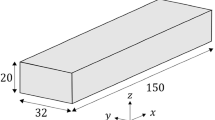Abstract
Dimensional integrity of assembled products is a critical factor in defining product functionality and process productivity. It has been reported that fixture faults are one of the root causes of defective sheet metal assemblies. Therefore, integrating new sensor technologies into manufacturing process fixtures will have a direct impact on improving assembly system quality by helping to detect fixture faults faster. A piezoelectric impedance sensor combined with multivariate statistical process control (MSPC) is proposed to accurately monitor the structural integrity of locating fixtures. The new sensing and detection methodology reduces costs associated with production downtime due to faulty fixtures. MSPC is utilized due to its inherent advantages over current sensor monitoring techniques, mainly damage metrics. Previously used damage metrics fail to function properly if voltage or measurement variation is observed. Numerous false alarms result along with an inability to reference or calibrate a fixture to a healthy state. Introducing MSPC concepts and methodologies into piezoelectric fixture sensing systems decreases false alarms, enables healthy sensor state identification, and improves monitoring capabilities.
Similar content being viewed by others
References
Ceglarek D, Shi J (1995) Dimensional variation reduction for automotive body assembly. Manuf Rev 8:139–154
Lalande F, Rogers CA, Childs B, Chaudhry Z (1996) High-frequency impedance analysis for NDE of complex precision parts. SPIE—Smart Structures and Materials, Bellingham, WA, pp 237–243
Park G, Cudney H, Inman DJ (2000) Impedance-based health monitoring of civil structural components. ASCE J Infrastruct Mater Syst Struct 11(6):448–455
Ayres JW, Lalande F, Chaudhry Z, Rogers CA (1998) Qualitative impedance-based health monitoring of civil infrastructures. Smart Mater Struct 7(5):599–605 doi:10.1088/0964-1726/7/5/004
Park G, Cudney H, Inman DJ (2003) Overview of piezoelectric impedance-based health monitoring and path forward. Shock Vibr Dig 35(6):451–463 doi:10.1177/05831024030356001
Thien AB (2006) Pipeline structural health monitoring using macro-fiber composite active sensors. Los Alamos National Laboratory (LANL) thesis/dissertation
Giurgiutiu V, Rogers C (2003) Active sensors for health monitoring of aging aerospace structures. Int J Cond Monit Diagn Eng Manage 6(1):3–21
Gyekenyesi AL, Martin RE, Sawicki JT, Baaklini GY (2005) Damage assessment of aerospace structural components by impedance based health monitoring. NASA Technical Report 213579
Simmers GE Jr (2005) Impedance-based structural health monitoring to detect corrosion. Virginia Polytechnic Institute and State University thesis
Bhalla S, Naidu ASK, Ong CW, Soh CK (2002) Practical issues in the implementation of electromechanical impedance technique for NDE. In: Proceedings of the SPIE International Symposium on Smart Materials, Nano-, and Micro-Smart Systems, December 16–18, Melbourne, Australia (paper no 4935-77)
Peairs DM, Park G, Inman DJ (2004) Improving accessibility of the impedance-based structural health monitoring method. J Intell Mater Syst Struct 15(2):129–139 doi:10.1177/1045389X04039914
Tseng KK-H, Naidu ASK (2002) Non-parametric damage detection and characterization using smart piezoceramic material. Smart Mater Struct 11(3):317–329 doi:10.1088/0964-1726/11/3/301
Giurgiutiu V, Zagrai A (2005) Damage detection in thin plates and aerospace structures with the electro-mechanical impedance method. Struct Health Monitoring Int J 4(2):99–118 doi:10.1177/1475921705049752
Grisso BL (2004) Considerations of the impedance method, wave propagation, and wireless systems for structural health monitoring. Mechanical Engineering thesis, Virginia Tech, Blacksburg, VA, 108 pp
Camelio JA, Heichelbech B (2006) Comparison of diagnosis methodologies on sheet metal assembly. Trans NAMRI/SME XXXIV:135–142
Dreyer JT, Pandit SM, Bett TA, Milbrodt P, Ungpiyakul T (2006) Application of data dependent systems modeling to failure prediction in non-stationary manufacturing processes. Trans NAMRI/SME XXXIV:461–469
Johnson RA, Wichern DW (1998) Applied multivariate statistical analysis, 4th edn. Prentice-Hall, New York
Rickli J, Camelio J (2007) Monitoring and diagnosis of assembly fixture faults using multivariate control charts and surface scanning content. Proceedings of MSEC 2007, October 15–18, Atlanta, Georgia
Author information
Authors and Affiliations
Corresponding author
Rights and permissions
About this article
Cite this article
Rickli, J.L., Camelio, J.A. Damage detection in assembly fixtures using non-destructive electromechanical impedance sensors and multivariate statistics. Int J Adv Manuf Technol 42, 1005–1015 (2009). https://doi.org/10.1007/s00170-008-1657-4
Received:
Accepted:
Published:
Issue Date:
DOI: https://doi.org/10.1007/s00170-008-1657-4




